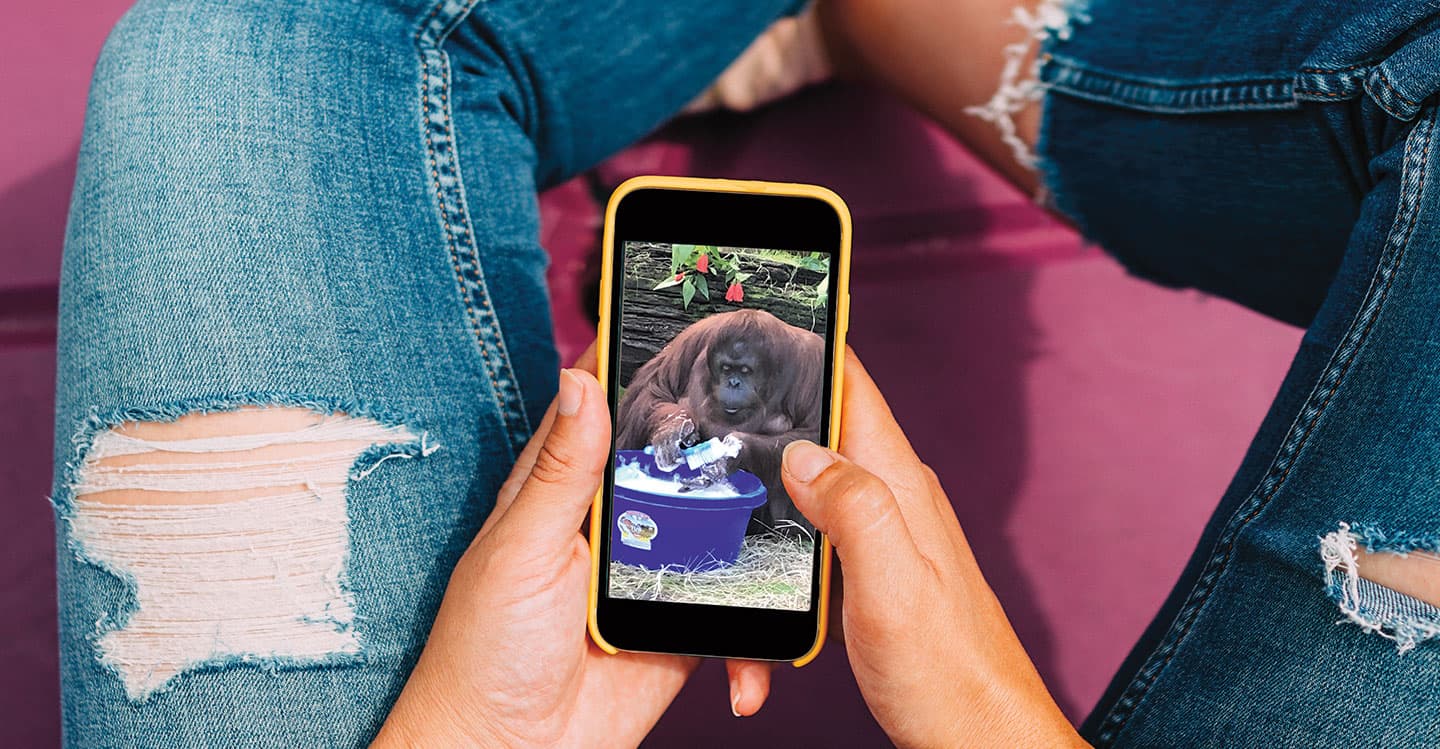If you think you wash your hands carefully, you should see Sandra. The orangutan uses a brush and a bucket of soapy water to thoroughly scrub her long fingers for nearly a minute at a time.
Recently, a video of Sandra’s handwashing technique went viral—along with a caption explaining that the great ape had picked up the habit during the coronavirus pandemic. Sandra, the caption said, observed the keepers at her Florida sanctuary washing their hands more often to avoid catching the virus—and started mimicking them. Thousands of people shared the orangutan’s scrubdown on Facebook as an example of how the pandemic is affecting even animals.

